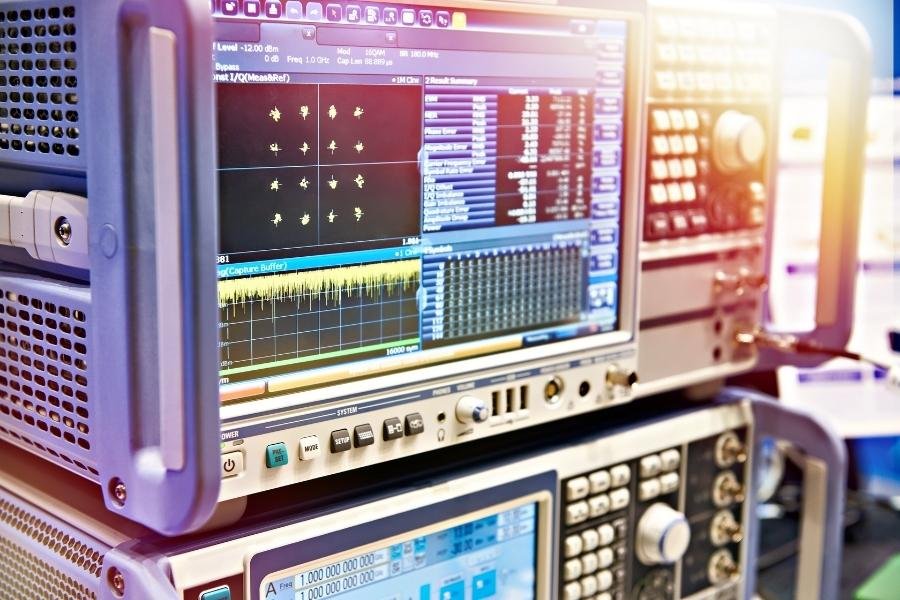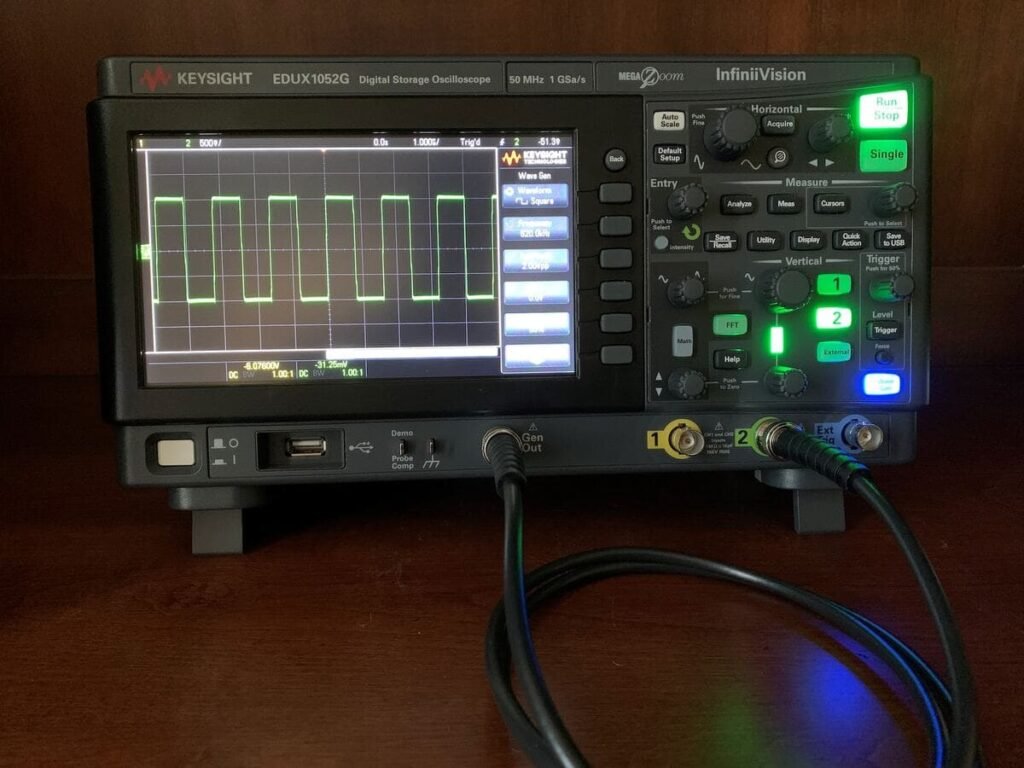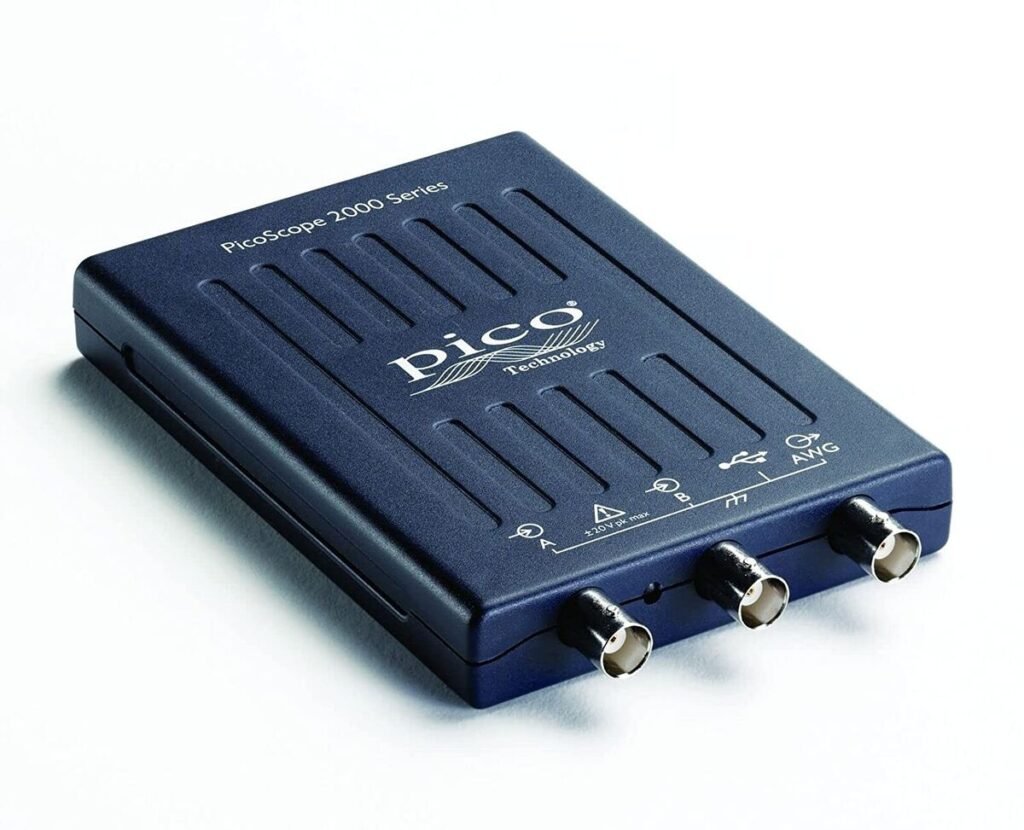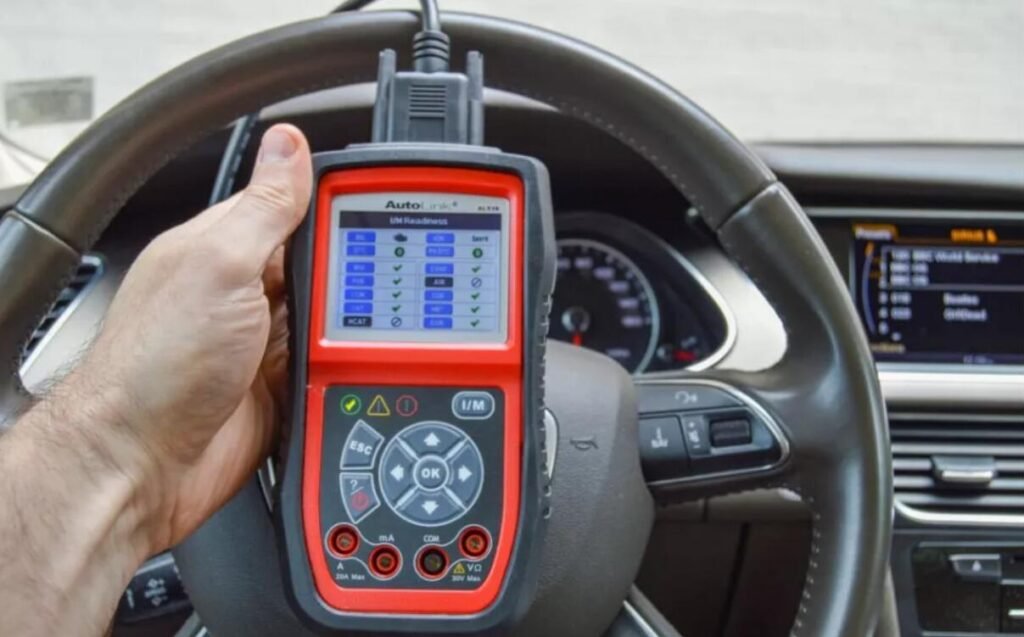Difference between a Signal Generator vs Function Generator (in 2024)
If you wondering what is the difference between a signal generator vs function generator, you are at the right place. They are both test instruments that generate test signals, but how are they different? Let’s find out!
Table could not be displayed.Don’t forget to also peruse our oscilloscopes, spectrum analyzers, and other electronics lab tools.
A signal generator is typically used to create standard test signals like sine, square, triangle, and other common test waveforms. It’s also used to produce a high-frequency signal for testing filters in the radio frequency band.
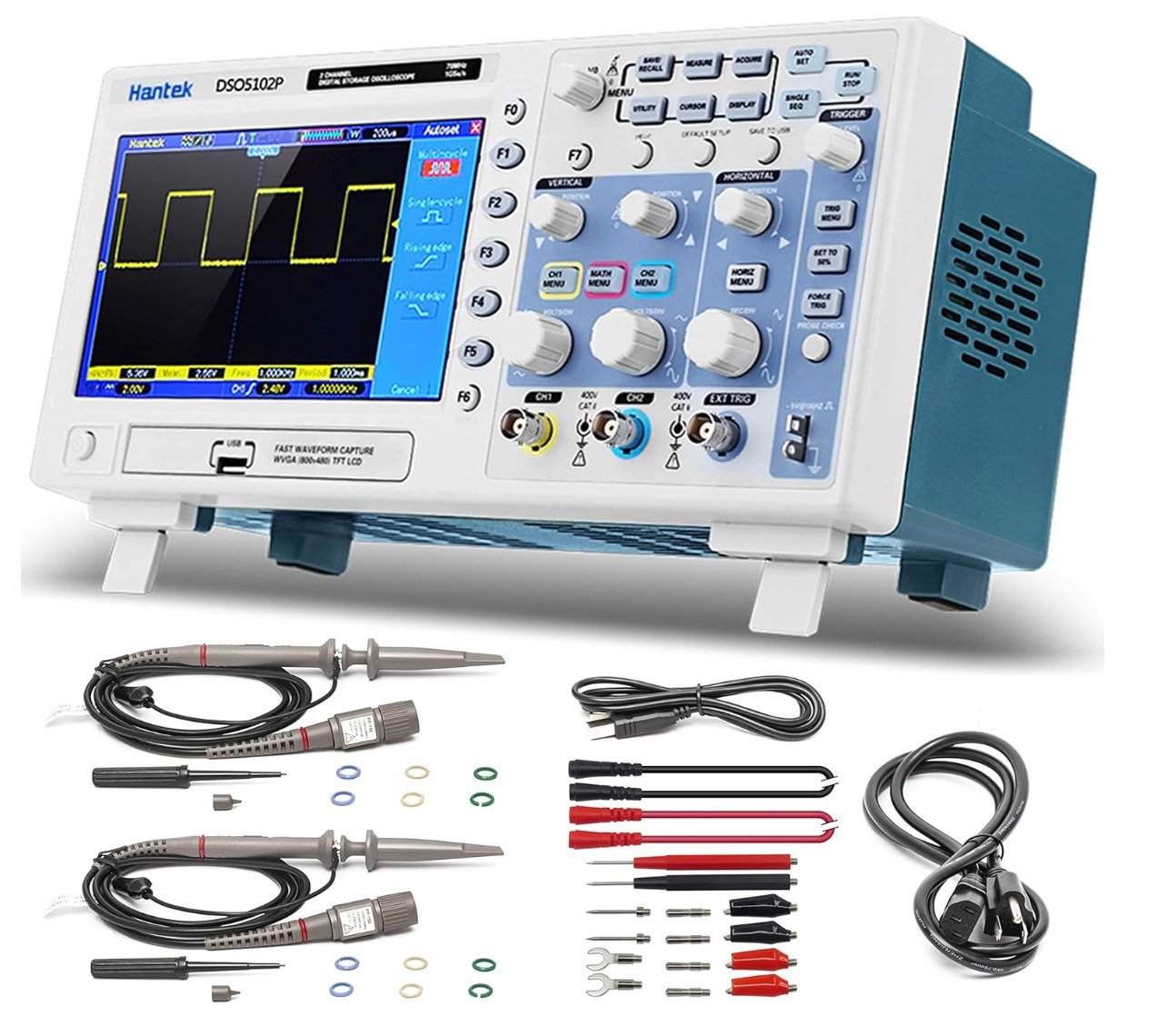

A function generator produces mathematical functions like sine, cosine, and logarithm functions at various input voltages or frequencies with fixed output voltages or frequencies. Test instruments are commonly categorized by their primary application: audio vs video vs digital vs RF vs logic.
Each of these categories comes with its own set of standard signals, making it easier for test equipment users to find the right instrument for their specific application. In addition to these standard functions, every piece of test equipment will have different features depending on its use case.
Signal Generator
A signal generator is a piece of test equipment that creates standard test signals and a wide range of arbitrary waveforms. They are designed to generate high-frequency signals as well as low-frequency signals. They are primarily used in radio frequency and microwave engineering applications.


Signal generators are used to create test signals and help check signal integrity and quality. They are often used to create test signals for cabling such as coaxial cables and fiber optic cables. They can also be used to test antennas. Signal generators are used for a variety of applications like testing and troubleshooting circuits or antennas to be used in the radio frequency band. They are used to perform services like finding impedance mismatches, measuring signal strength, checking cable lengths, finding noise levels and more.
Function Generator
A function generator is a piece of test equipment that creates mathematical functions at various input voltages or frequencies with a fixed output voltage or frequency. Function generators are used to create a range of standard as well as arbitrary waveforms for testing. They can be used for a number of applications like testing and troubleshooting circuits or antennas to be used in the radio frequency band.
Function generators are used to perform services like finding impedance mismatches, measuring signal strength, checking cable lengths, finding noise levels and more. They are used to verify the operation of amplifiers, power supplies and other circuits. Function generators are used in the design and test stages of electronics and electrical equipment.
They are used to design circuits and test them once they are built. Also, they can be used to generate sine, square and triangle waves, as well as other standard waveforms. In addition, function generators can be used to create arbitrary waveforms based on user input.


Signal Generator vs Function Generator
While both are used for testing and troubleshooting circuits, function generators are used to produce a wide range of arbitrary waveforms. They can produce a variety of standard waveforms like sine, square, triangle and other common test waveforms.
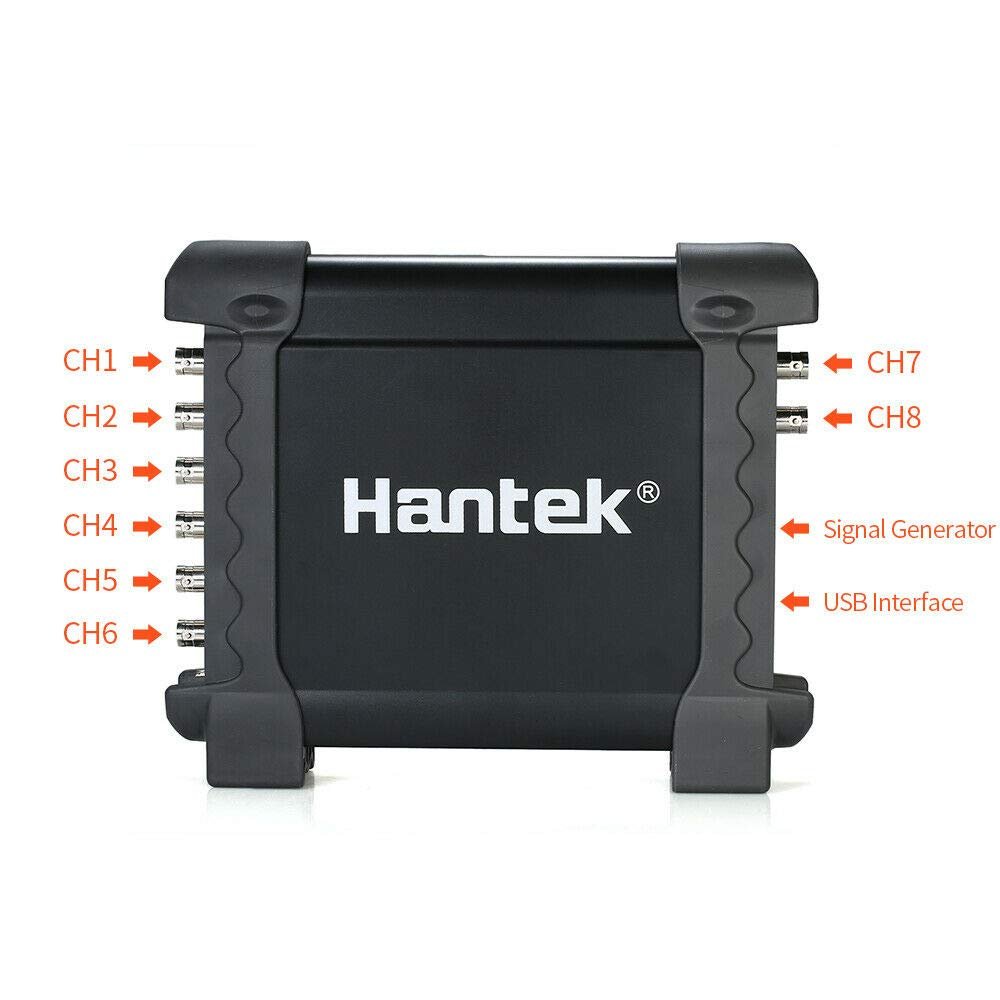

A signal generator is designed to create a high-frequency signal for testing filters in the radio frequency band. A signal generator is used to create a wide range of standard test signals. It can only produce common test waveforms like sine, square and triangle waveforms. A signal generator can also create a high-frequency signal for testing filters in the radio frequency band.
A function generator produces mathematical functions at various input voltages or frequencies with a fixed output voltage or frequency. They can be used to create a variety of standard as well as arbitrary waveforms for testing. They are used to perform services like finding impedance mismatches, measuring signal strength, checking cable lengths, finding noise levels and more.
Sine vs Square Function Generator
Both the sine and square wave functions are common waveforms that are used to test equipment. The sine wave is a periodic waveform that repeats itself every 360 degrees while the square wave is a periodic waveform that repeats itself every 90 degrees.
The sine waveform is used to test amplifiers, signal sources and RF circuits. The square waveform is used to test logic circuits, power supplies, oscillators and other circuits. When using these waveforms, you need to make sure the test equipment is set to the same frequency.
If the equipment has a function to change the frequency of the waveform, the settings should be kept at the same.
Amazon Review Feedback on Difference between a Signal Generator vs Function Generator
As an electronics enthusiast who recently purchased both a signal generator and a function generator, I’ve found distinct advantages to each. The signal generator excels in producing precise, high-frequency signals, making it ideal for RF testing and communications applications. It offers advanced modulation options, higher frequency ranges (often up to GHz), and superior signal purity, albeit at a higher cost and with a steeper learning curve. On the other hand, the function generator is more versatile for generating common waveforms (sine, square, triangle) and is generally more affordable and user-friendly. It’s perfect for everyday electronics work and audio applications, often including sweep and burst functions. However, it typically has a limited frequency range (up to MHz) and fewer modulation options. In my experience, the function generator is sufficient for most general-purpose testing, while the signal generator is indispensable for specialized high-frequency work. Ultimately, both have their place in a well-equipped electronics lab, with the choice depending on your specific needs and budget.
Reviewer Final Comments
There are a variety of test instruments used to create test signals and help check signal integrity and quality. Depending on the application and use case, one test instrument may be more useful than another. While these instruments have a variety of different functions, they all create test signals to help troubleshoot and verify the quality of an electronic device.

